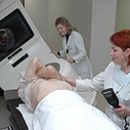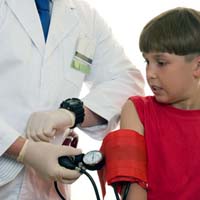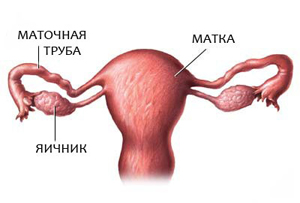What depends on the choice of the type of surgery in the sarcoma of the Jinga? What is the chemotherapy of the sarcoma of Yinga? Read in this article.
Content
Operation in the sarcoma of the Jinga
The choice of the type of operation depends on the localization of the tumor and the effect of the operation on the function of the affected part of the body.
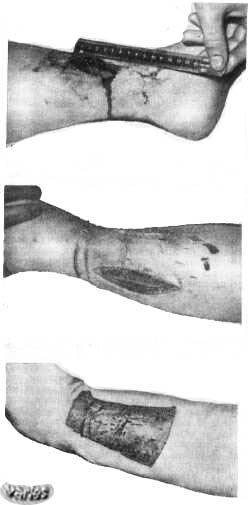 In many cases, the affected bone or soft tissues can be completely removed by surgically without violating the function of the organ. In other cases, the preservation of the function of the organ after the complete removal of tumor tissue is impossible.
In many cases, the affected bone or soft tissues can be completely removed by surgically without violating the function of the organ. In other cases, the preservation of the function of the organ after the complete removal of tumor tissue is impossible.
If many years ago, the sarcoma of the Uinga of the Upper and the lower limbs was treated with amputation, then the preserved operations are currently most often performed. In this case, remote bones and joints are replaced by grafts or prostheses. Saved operations are carried out even patients with lesion of pelvic bones.
In sarcoma sarcoma with the defeat of vital nerves and vessels, radiation therapy can be applied instead of operation.
In the case of the localization of the sarcoma of the Yinga on the chest, the tumor is removed along with several ribs, which are replaced by synthetic material.
Metastatic nodes are removed during the Toracotomy operation. After surgery, there is a radiation therapy for pulmonary fabric.
From the immediate and long-term consequences of the operational treatment of the Sarcoma of the Jinga should be noted poor healing of wounds and infectious complications. This is explained by the previously applied chemotherapy and irradiation. After the operation, many sarcoma sarcoma need restorative treatment.
Chemotherapy Sarcoma Jinga
Chemotherapy with sarcoma sarcoma is carried out with the help of antitumor drugs introduced, as a rule, intravenously and rarely inside. This treatment method is applied to all patients, regardless of the stage of the disease.
This is explained by the fact that even in patients with a localized process can be microscopes detected only by microscopic research. Therefore, the refusal of chemotherapy in patients with a localized stage will eventually lead to the growth of these micrometastases.
For chemotherapy, the sarcoma of the UNInta uses various combinations (combinations) of antitumor drugs, which are prescribed every 3-4 weeks.
First, a combination of such drugs such as vincristine, adriamycin (doxorubicin) and cyclophosphane is applied. After the side effects of chemotherapy pass, the second combination is prescribed, including iphosfamide and etoposide. Such chemotherapy cycles are repeated 4-5 times.
Chemotherapy may be accompanied by various side effects in the form of nausea, vomiting, appetite loss, baldness, lesions of the oral mucosa and urinary bubble, increasing susceptibility to infection, menstrual disorders, infertility, heart muscle damage.
The most serious, albeit rare, complication of chemotherapy may be the occurrence of a second malignant tumor, in particular, acute myeloid leukemia.
Radiation therapy of the Sarcoma of Jinga
In patients with sarcoma of UNInta, external irradiation of high energies sources. This tumor is highly sensitive to irradiation, and most patients can be heal with a combination of chemotherapy and irradiation.
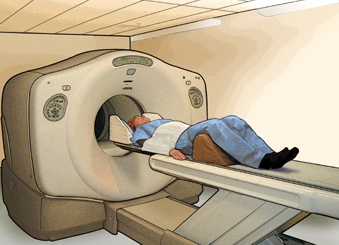 The total dose of radiation therapy on the center is usually 45-55 Gray. According to the indications, the lungs are irradiated, but the dose of radiation therapy is reduced.
The total dose of radiation therapy on the center is usually 45-55 Gray. According to the indications, the lungs are irradiated, but the dose of radiation therapy is reduced.
A serious complication of radiation therapy includes a bone growth. At the same time, the younger child, the more pronounced side effects and complications. Radiation therapy may cause the shortening of the limb, the deformation of the face, etc.
When the pelvis region is irradiated, the bladder and colon. Radiation therapy on the joint area can cause restriction of its function due to the formation of scars.
Side effects and complications of radiation therapy when exposed to the dorsal and brain are manifested after 1-2 years and consist in headaches and deterioration of mental activity.
High doses of radiation therapy (over 60 grades) in 20% of cases lead to the development of a second malignant tumor.
Bone marrow transplantation and peripheral stem cells
Recently, patients with a poor prognosis, in particular with metastases in bone and bone marrow, having a survival rate of less than 10%, is used more intensive treatment - chemotherapy with high doses of body irradiation and bone marrow transplantation or peripheral stem cells. This approach allows you to cure more than 30% of patients with a metastatic process.
After the end of the treatment of Sarcoma of Yinga
After the fulfillment of the entire treatment program, the sarcoma of Yinga patients should be under the supervision of doctors and undergo a periodic examination to identify complications, a possible relapse or a second tumor.
The intervals between visits of the doctor over time are lengthened.

